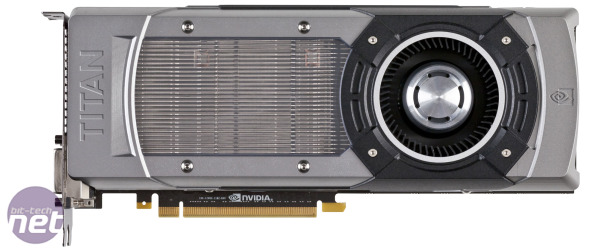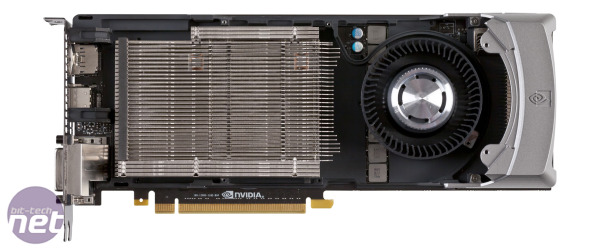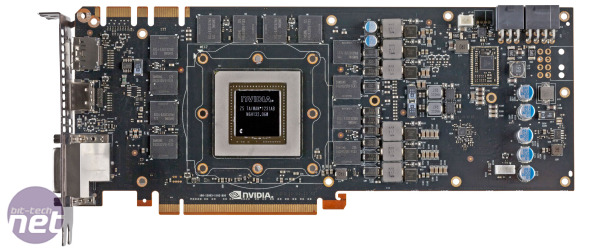Nvidia GeForce GTX Titan First Look
February 19, 2013 | 13:57
Companies: #nvidia-geforce-gtx-titan-first-look #titan

The Card
The GTX Titan, like the GTX 690 4GB, will only be available in the Nvidia approved design shown here (and an all-in-one liquid cooled SKU we’re yet to get our hands on). This means no board partner versions with custom coolers and power circuitry, although there will be factory overclocked versions. Board partners are also able to differentiate the limits to which the card can be overclocked in their own overclocking software; presumably those with shorter warranties will offer more headroom for overclocking.While you’ll only see one or two versions of the GTX Titan available then, we’re sure you’ll agree Nvidia’s reference design is gorgeous. The aluminium casing runs the length of the card, with a black aluminium sub-frame underneath bolted to the card to ensure to amount of board-bend over time.
A radial fan (equipped with hub-cap, what’s next, chrome-spinners?) draws air in and over a small aluminium fin-stack fitted to the power circuitry at the real, before blowing air out through the dense aluminium fin stack fitted above the GPU. Beneath this is a vapour chamber to facilitate rapid thermal transfer away from the GPU, with the waste heat then disposed of out the rear of the case. While it might look a lot like the GTX 690 4GB, the GTX Titan’s cooler exhausts no air into the case itself and while its 250W TDP is high, the 267mm card length means it’s not above being fitted into small-form-factor chassis.
Strip the cooler off completely and you’ll find the huge GPU surrounded by memory modules on three sides and on both sides of the PCB. Oddly Nvidia has chosen not to actively cool the modules on the back side of the card due to the thermal issues caused by the associated back-plate in multi-GPU configurations. Power circuitry allows for six-phases to the GPU and a pair of phases for the 6GB of memory for a total of 8+1 power phases, while a 6-pin and 8-pin PCI-E power connector fitted to the top of the card supply the juice. Interestingly, there also looks to be an un-used second 8-pin power connector mount to the side of the card; perhaps a carry-over from the Tesla card.
Output wise there’s the usual pair of DVI ports, alongside an HDMI and DisplayPort, with a pair of SLI gold fingers supporting up to quad-SLI for when you want to break those 3D-Mark world records. We’ll hopefully be taking a look at the card’s multi-GPU performance in the near future in two, three and even four card configurations should Nvidia to grace us with an additional pair.

MSI MPG Velox 100R Chassis Review
October 14 2021 | 15:04











Want to comment? Please log in.